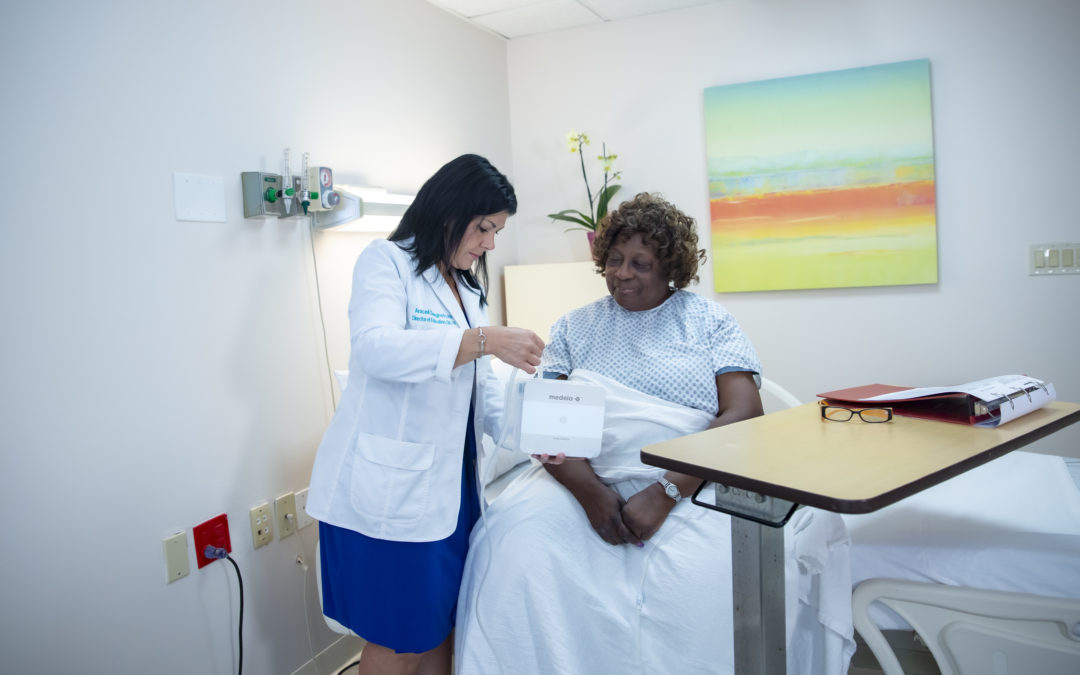Wound care is an inevitable reality for patients of varying diagnoses and medical needs ‒ and a burdensome challenge that costs the global health economy nearly $100 billion per year.
From pressure ulcers and chronic injuries to diabetes and obesity, there’s no shortage of conditions that eventually debilitate patients and leave them grappling with the pain, discomfort, and uncertainty of wound treatment.
Despite the challenges, wound care has significantly improved over the past 100 years. Of all the advancements, negative pressure wound therapy (NPWT) has come out on top and dramatically changed the way we understand and treat wounds.
What is negative pressure wound therapy, and how can it improve patient recovery?
As a top medical equipment supplier in the Greater Rochester area, Mission Health + Home has helped clinicians and patients throughout Central and Western New York integrate NPWT in their acute care, long-term care, and home care settings. If you’d like to learn more about how NPWT can improve your individual recovery or medical practice, contact us today!
What Is Negative Pressure Wound Therapy?
Negative pressure wound therapy (NPWT) is a world-renowned treatment modality that draws fluid from an acute or chronic wound by using a vacuum and specialized dressing. The dressing fits to a wound, protects it from contaminants, and speeds up the healing process.
What types of wounds can NPWT treat? NPWT is very effective in healing burns, pressure ulcers, diabetic ulcers, long-lasting wounds, or wounds complicated by infection, poor circulation, or exposed bone. Because NPWT also promotes blood flow and localizes immune cells in the affected area, it can decrease comorbid complications.
How Can NPWT Improve Patient Recovery?
Versatile & Reliable
Dressings can fit over wounds of all types and sizes. The dressings come in either foam or gauze, and both kinds feature a transparent film that allows for accurate application. Foam and gauze fillings also produce the same suctioning capabilities. With NPWT, the number of dressing changes is significantly smaller than conventional wound dressings.
The secure and quick-connecting tubing attachment allows for easy application and thorough and accurate delivery of pressure across the wound site. NPWT devices utilize an electronic feedback system that allows for better pressure control and maintenance between the pump and the wound site.
The ability to alter the pressure and flushing settings allow for faster and more accurate pressure delivery or fluid removal. In fact, the Medela NPWT system can remove 89% of fluid buildup in 20 minutes. The efficiency and speed of fluid removal is ultimately beneficial for the patient.
The NPWT modality can also detect blockages in both the pump or dressing. You can change the flushing cycle based on how much fluid the tubing collects.
Not only does NPWT remove fluid from the wound bed itself. It also removes excess fluid and edema from the site, enhancing the process of perfusion, where blood can pass more easily through the vessels and tissues.
Have any questions? Don’t hesitate to reach out to us today!
Faster Healing
A NPWT vacuum causes the wound dressing to contract, stimulating the surrounding tissue cells and altering the pressure in the tissue as a result. As this occurs, blood can flow more evenly and in higher volumes through the affected area, initiating the formation of granulation tissue through a process known as microdeformation.
As microdeformation occurs, the wound edges draw in closer, reducing the wound in size. This process is known as macro-deformation. Because NPWT dressings apply to nearly all sizes and types of wounds, the process of macro-deformation can remodel and heal even the deepest or most severe of wounds.
The seal of a dressing provides the moisture a wound needs to heal properly. With other conventional wound dressings, it’s not uncommon for wounds to dry out, resulting in pain and a slower recovery. Too much moisture can also have negative implications and increase the risk for infection.
Because NPWT simultaneously removes exudates, contaminants, and stagnant fluid from the wound site, the risk of bacterial infection, abscess formation, and blockages are greatly reduced.
Improved Patient Experience
Most NPWT devices are compact, allowing ample comfort, mobility, and convenience for the patient, whether they’re healing in a facility, being cared for at home, or going back and forth between both places.
Pressure injuries, sometimes referred to as bedsores or pressure ulcers, pose a series of complications that can prolong recovery and increase the cost of care. These complications include immobility, infection, permanent scarring, and can complicate comorbid conditions. Pressure injuries are highly prevalent across health care settings, ranging in size and severity and affecting a variety of patients.
With all that said, it’s essential for health care clinicians to have an effective pressure wound strategy in place for patients in all care settings. By integrating NPWT, clinicians can decrease the risk of pressure injuries, reducing the length of stay and optimizing the patient’s overall recovery.
Heal, Live, & Move Better with NPWT
Inadequate wound care is an ongoing issue that can prolong and complicate a patient’s overall recovery. But with innovative negative pressure wound therapy, patients are recovering and healing faster and better than ever before.
If you’re suffering from a chronic wound, or if you treat wounds in your area of clinical expertise, contact Mission Health + Home to discover how NPWT can improve patient recovery!

